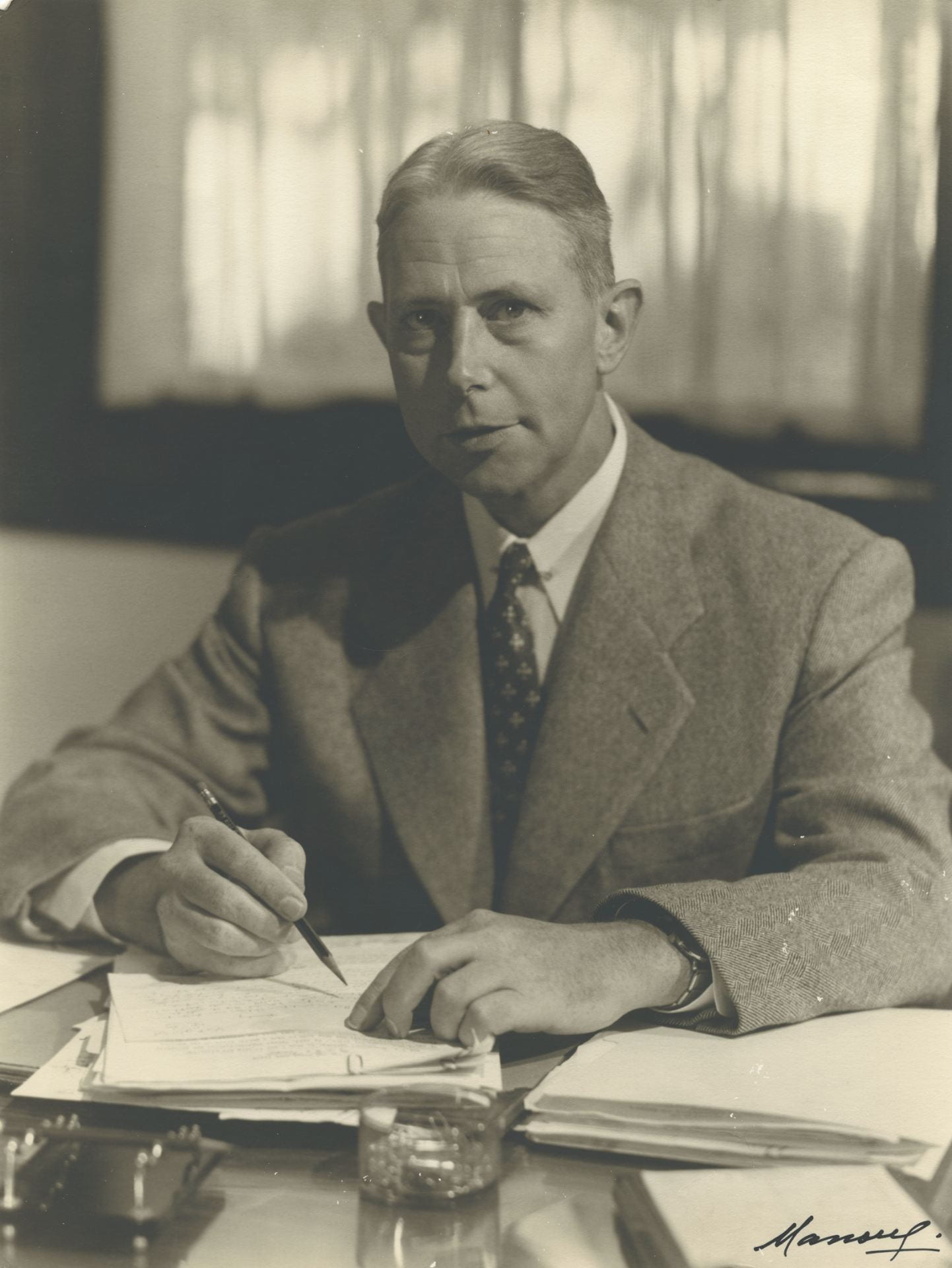
Stephen B. L. Penrose Jr. (AUB President from 1948 to 1954) works at his desk.
Features | Profiles
Stephen B. L. Penrose Jr. (AUB President, 1948–54)
By Barbara Rosica
Fall 2019/Winter 2020
As the first AUB president who was not a member of the Bliss and Dodge founding families, President Penrose had much to prove during a period of rapid development in the region. Appointed in 1948, Penrose was also the first AUB president to have formerly held a US government position. During World War II, he worked in an administrative role for the Office of Strategic Services in Cairo. He later served as a special assistant to US Secretary of Defense James V. Forrestal.2 While these appointments led to speculation that the university might be too closely linked to US foreign policy, AUB’s integrity as an institution that supported national autonomy and promoted freedom of thought and expression was never in doubt. Penrose’s ties to the US government also paved the way for a robust pipeline of US-funded scholarships and program grants through the Point Four Program of foreign aid and USAID (Agency for International Development).3
During 1953 and 1954, Penrose traveled extensively in the United States, where he secured financing for the much-needed expansion of both AUB and its then-affiliated preparatory school International College. On December 9, 1954, while drafting a new constitution for AUB, Penrose worked late into the night. He then slept, never to awake. As with his predecessor, Howard S. Bliss, Penrose may have been the victim of the impossible pace of institutional rebuilding in the aftermath of a world war. At the time of his death, Penrose was one of America’s best-known advocates for Palestinian rights. As the Palestinian representative at the United Nations cabled Penrose’s widow Margaret “Peggy” Penrose: “The Palestine Arab refugees lost a champion and hero.”4
As a lasting memorial, the university established the Penrose Award to honor exceptional students. Penrose’s book on AUB, That They May Have Life: The Story of the American University of Beirut, 1866–1941, remains an invaluable history of the university’s first 75 years.
1. “Stephen B. L. Penrose, Jr.: A Biographical Tribute,” Frances Copeland Stickles, 1993 publication of a collection by Lawrence L. Dodd, archiveswest.orbiscascade.org
2.. A Mutual Concern: The Story of the American University of Beirut, John M. Munro, Caravan Books, 1977, pg. 100
3.. The American University of Beirut: Arab Nationalism & Liberal Education, Betty S. Anderson, University of Texas Press, 2011, pg. 137
4.. “Stephen B. L. Penrose, Jr.: A Biographical Tribute,” Frances Copeland Stickles, 1993 publication of a collection by Lawrence L. Dodd, archiveswest.orbiscascade.org